My Singapore Suites adventure brought me to Beijing, where I spent the better part of a week celebrating Chinese New Year with my family. I’ll pick up this installment of the trip report series at Hong Kong International Airport, where my United Island Hopper journey would begin in earnest.
Instead of doing my usual flight and hotel reviews for this part of the trip, I’ll simply carve this entire trip across the Pacific islands into four blog posts:
-
Part 1, which will cover the day I spent on the US territory of Guam
-
Part 2, which will focus on my overnight stay on the Micronesian island of Chuuk
-
Part 3, which will cover my time in Pohnpei, the largest of the the Federated States of Micronesia
-
Part 4, which will cover my journey onboard United Flight 155 to Kosrae (but not really!), Kwajalein, Majuro, and Honolulu
I had booked this journey as part of a larger Aeroplan Mini-RTW redemption, and since Aeroplan allows you to build in layovers of up to 24 hours, I had studied United’s flight schedules carefully to optimize my time on the islands as much as possible.
Specifically, my routing looked as follows:
-
United 116, departing Hong Kong at 11:55pm Friday night, arriving in Guam at 6:40am Saturday morning
-
United 176, departing Guam at 7:50pm Saturday night, arriving in Chuuk at 9:40pm Saturday night
-
United 133, departing Chuuk at 11am Sunday morning, arriving in Pohnpei at 1:22pm Sunday afternoon
-
United 155, departing Pohnpei at 1:44pm Monday afternoon, arriving in Honolulu at 2:50am Monday morning, with short stops in Kosrae, Kwajalein, and Majuro
Because Flights 176 and 133 are only operated once a week, the above combination of the days of the week is the only one that would allow you to have extended layovers on some of the islands.
Moreover, you’ll note that the Pohnpei layover is actually 24 hours and 22 minutes long, but that was the result of an involuntary schedule change on the inbound flight that pushed the layover duration over the 24-hour threshold, and Aeroplan let me keep the routing as is.
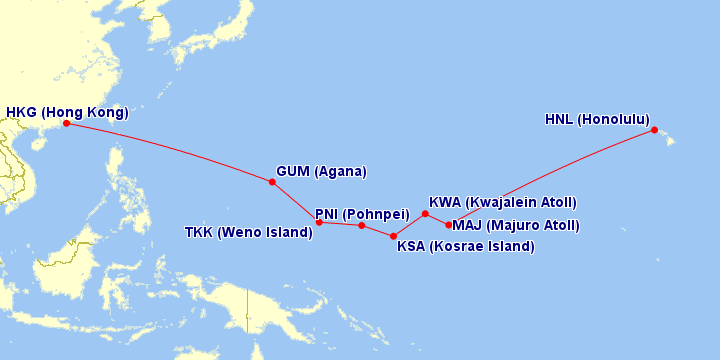
Anyway, the first segment, Flight 116, was a four-hour redeye flight from Hong Kong. Although I was originally booked in economy class for all of the Island Hopper flights, I had managed to secure an upgrade to business class a few days when some award seats were released a few days in advance.
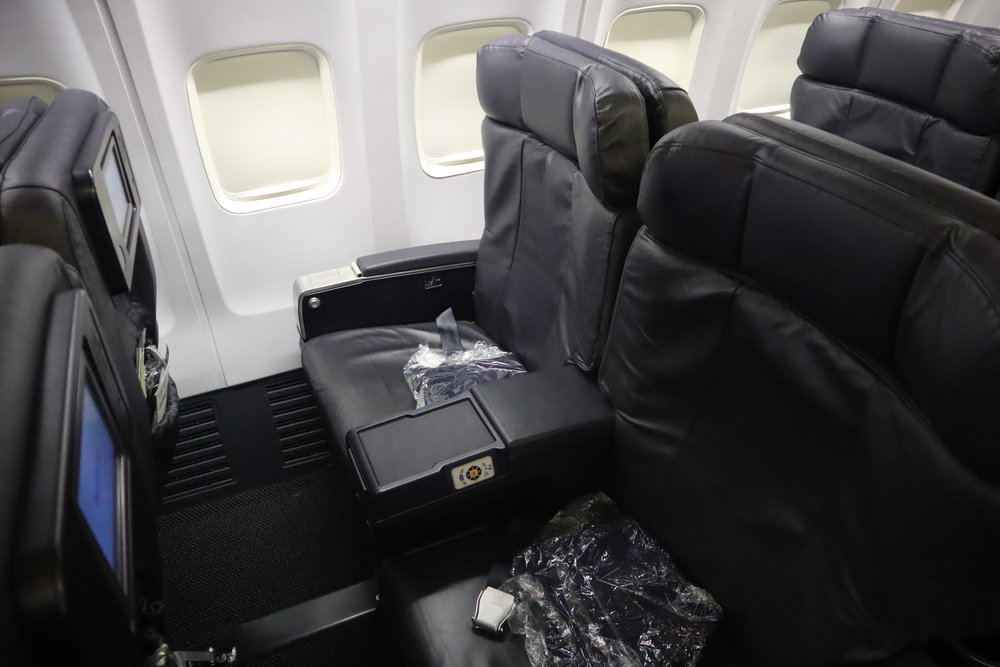
United 737 business class
Even then, though, the seats on the single-aisle Boeing 737s that United runs up and down the Pacific don’t exactly resemble lie-flat luxury; instead, there’s only a moderate degree of recline, which made for a short and fitful night of sleep on the way to Guam.
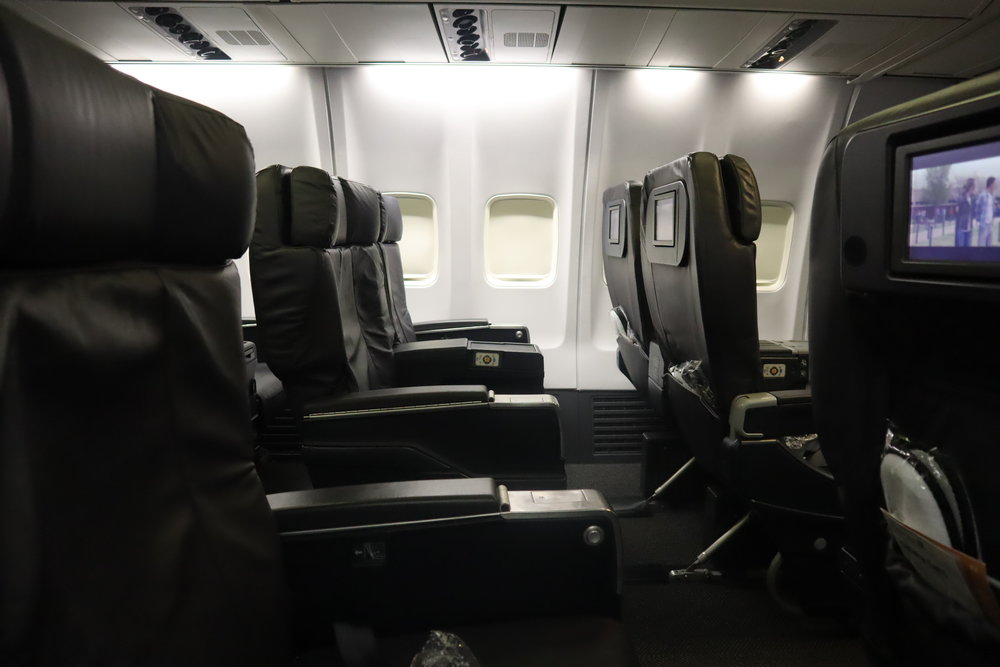
United 737 business class
After descending into Guam’s Antonio B. Won Pat International Airport at the crack of dawn, I stopped by the airport cafe for a coffee before taking stock of my surroundings.
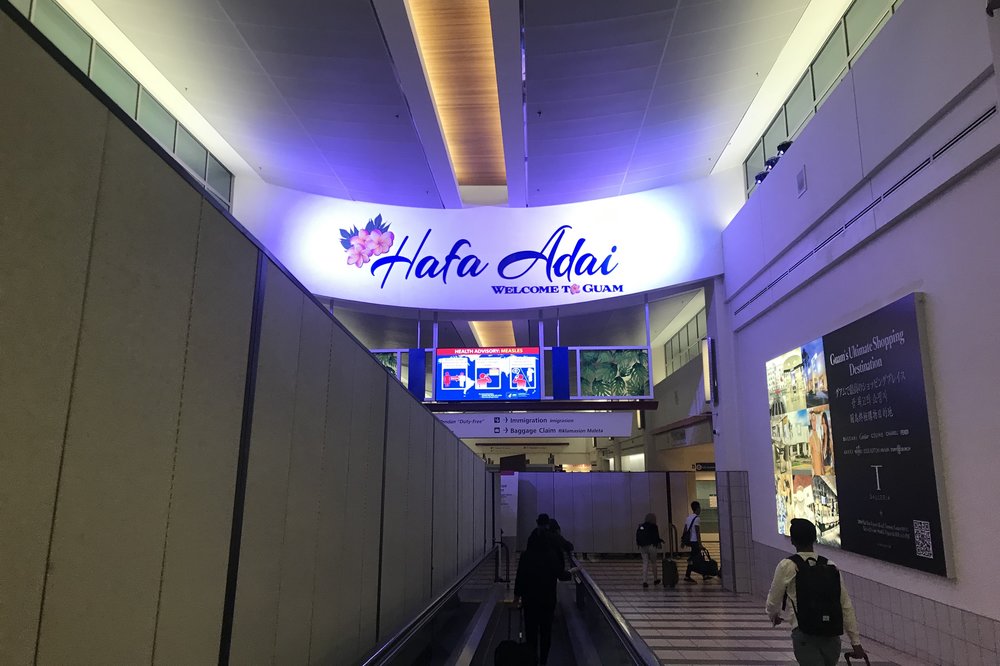
Arriving in Guam
I had about 12 hours to explore Guam, and as I began looking up some of the island’s star attractions, it soon became apparent that this was the kind of place where it’s virtually impossible to get around unless you have a car.
Some of you might not know this about me, but getting my driver’s license is, in fact, one of the things I’ve yet to accomplish in life. Crazy, right?
I mostly just fly around and take public transport… which serves me well as a city dweller most of the time, but leaves me in some awkward situations when I need to explore places that are best explored by car.
Since I didn’t feel like stumping up the cash to hire a driver for the day either, I decided to simply go it alone and spend my time exploring the district of Tumon, which is located closest to the airport. There seemed to be enough things to do in the immediate area to keep me occupied for a day.
That meant that my day began with a 30-minute walk along the airport roads, down to the Guam Premier Outlets, a major outlet mall here in Tumon.
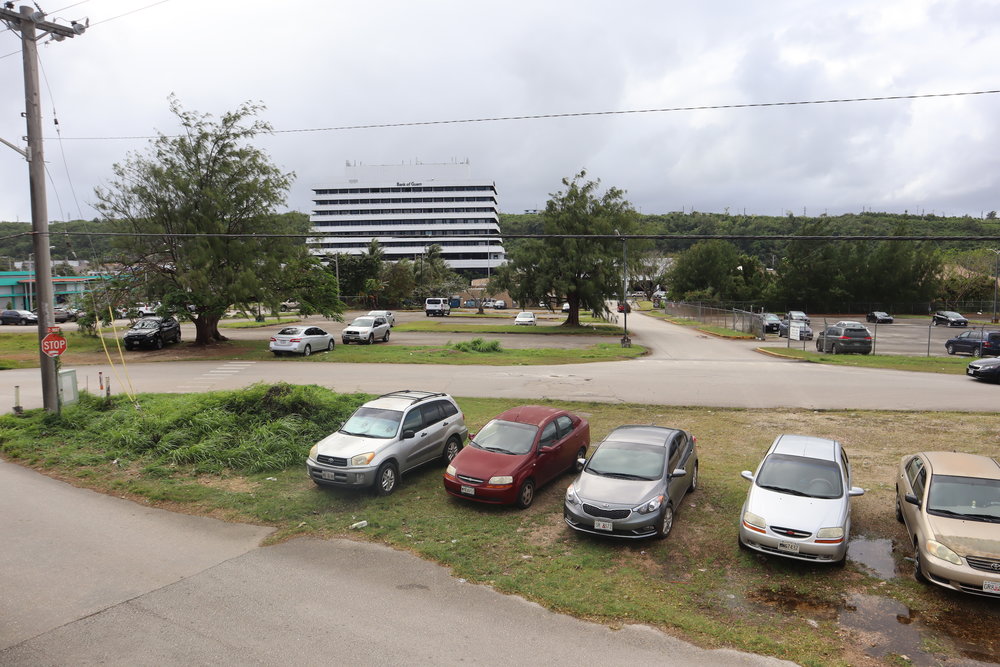
Street scene near Antonio B. Won Pat International Airport
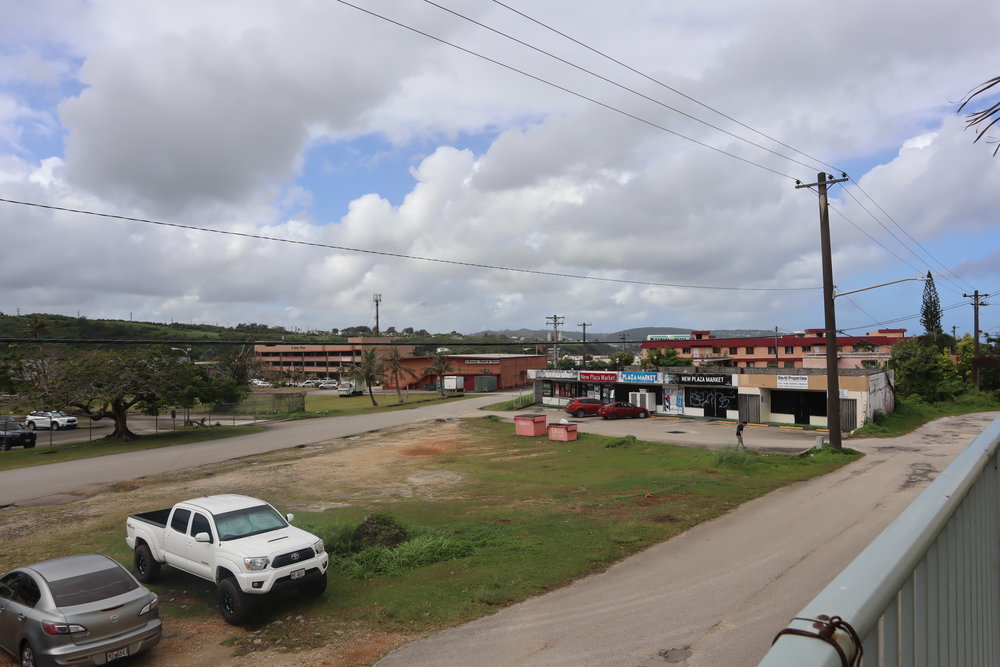
Street scene near Antonio B. Won Pat International Airport
One of my curiosities in coming to Guam was just how much, as a US territory, the island resembled what you’d find in the continental USA. And looking at the Guam Premier Outlets, I could see that the island was very Americanized indeed.
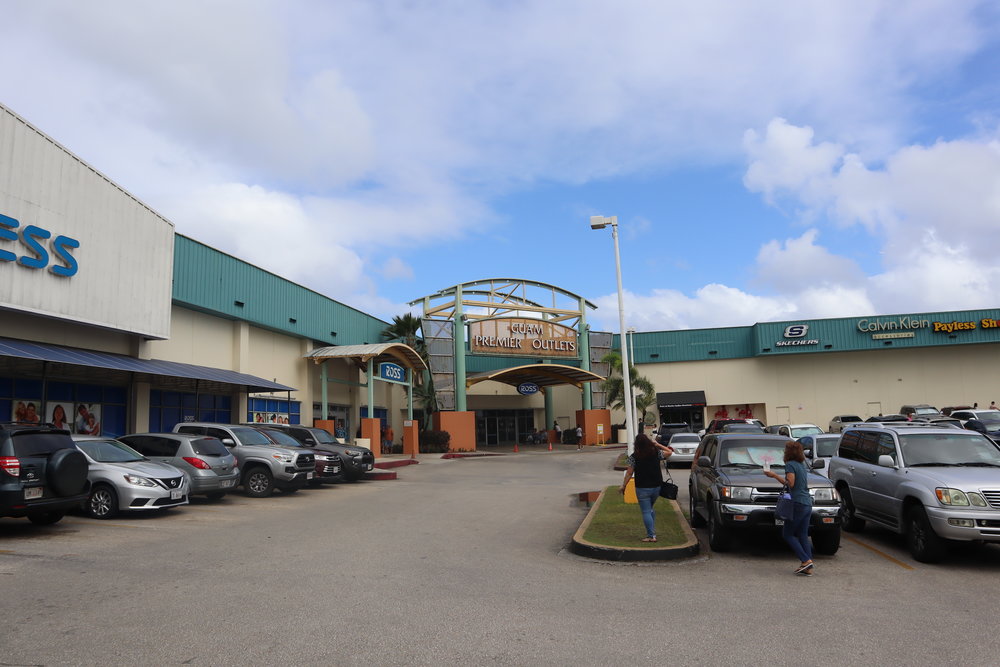
Guam Premier Outlets
For such a small island, Guam has quite a storied history. The island was originally settled by the indigenous Chamorro people (of Austronesian origin, similar to modern-day Indonesians, Filipinos, and native Hawaiians, Polynesians, and other islanders) over 4,000 years ago. After millennia of relatively peaceful society, Guam was colonized by Spain in the 17th century as part of the same expansion efforts that brought the Philippines into the Spanish realm.
That remained the status quo until the late 19th century, when Guam was handed over to the United States as part of the spoils from the Spanish–American War. Throw in a brief two-year occupation by the Japanese during World War II, and the subsequent restoring of order by the Americans, and you have modern-day Guam: a fascinating tapestry of cultures, where it wouldn’t be out of place to see local Guamanians with Hispanic surnames speaking Chamorro to each other, while walking by a sign that’s written in both English and Japanese scripts.
I spent some time in the Guam Premier Outlets’ food court sipping coffee and people-watching. It was my first trip to this part of the world, so I was especially curious to observe and get to know the local cultural mix.
After getting fully caffeinated at the mall, I continued my walking tour, heading in the direction of Tumon Beach, one of the most popular beaches on the island and home to several beachside resorts. Along the way, I passed by a small landmark honouring Archbishop Felixberto Flores, who had served in Hagåtña, the de facto capital village of Guam.
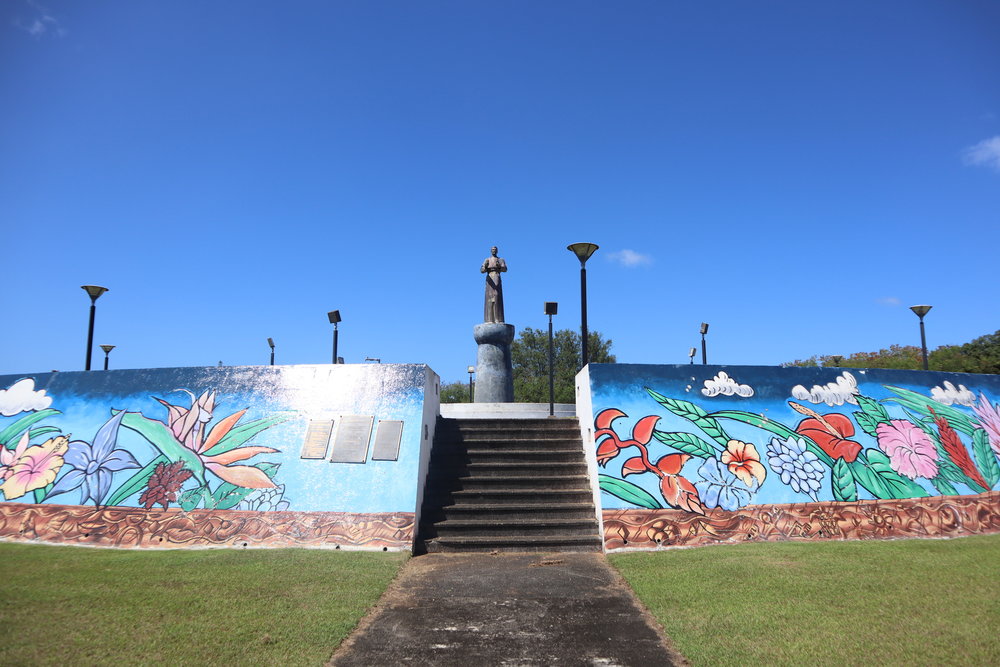
Archbishop Felixberto Flores monument
It suffices to say that my exploration of Guam on two feet was a highly inefficient one, since a 30-minute walk would’ve otherwise taken just a few minutes by car. I really do need to get my driver’s license sorted out sooner rather than later…
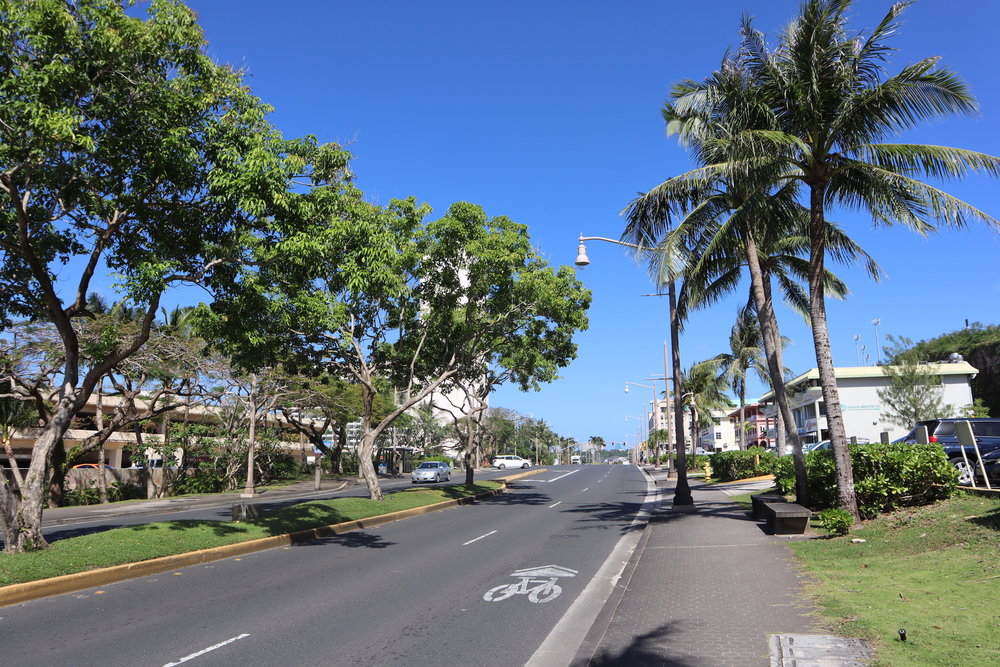
Street scene near Tumon Beach
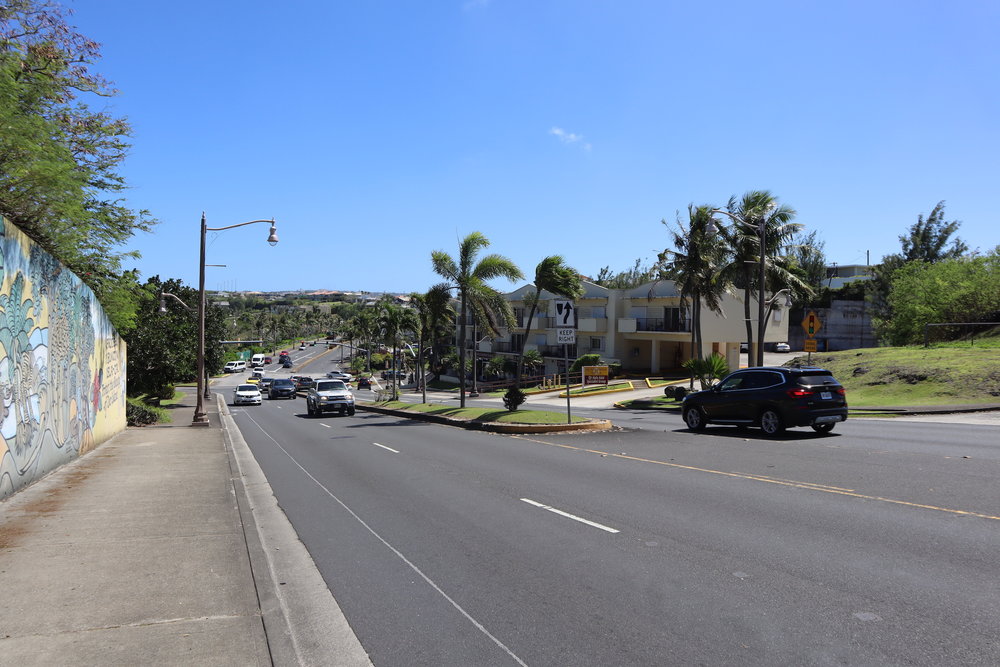
Street scene near Tumon Beach
Eventually, in the face of the sweltering Pacific heat, I made it to Tumon Beach, which seemed like a nice enough place to bask in the sunlight if I were here for longer. Since I didn’t actually have any beach gear with me, I soon retreated to the nearby Hilton Guam to use the wifi and grab some lunch from the lobby cafe.
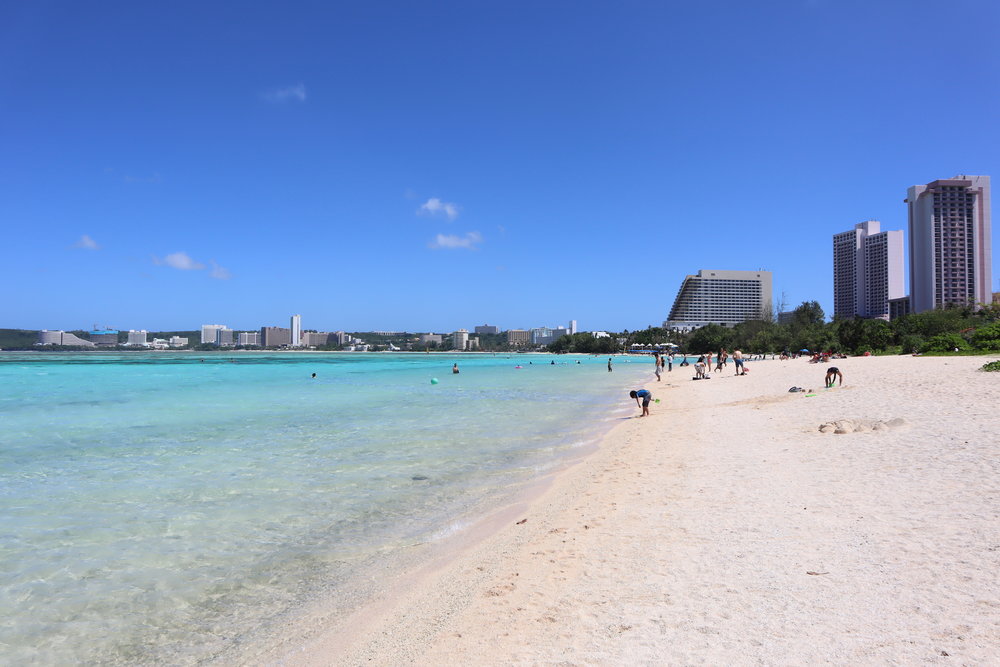
Tumon Beach
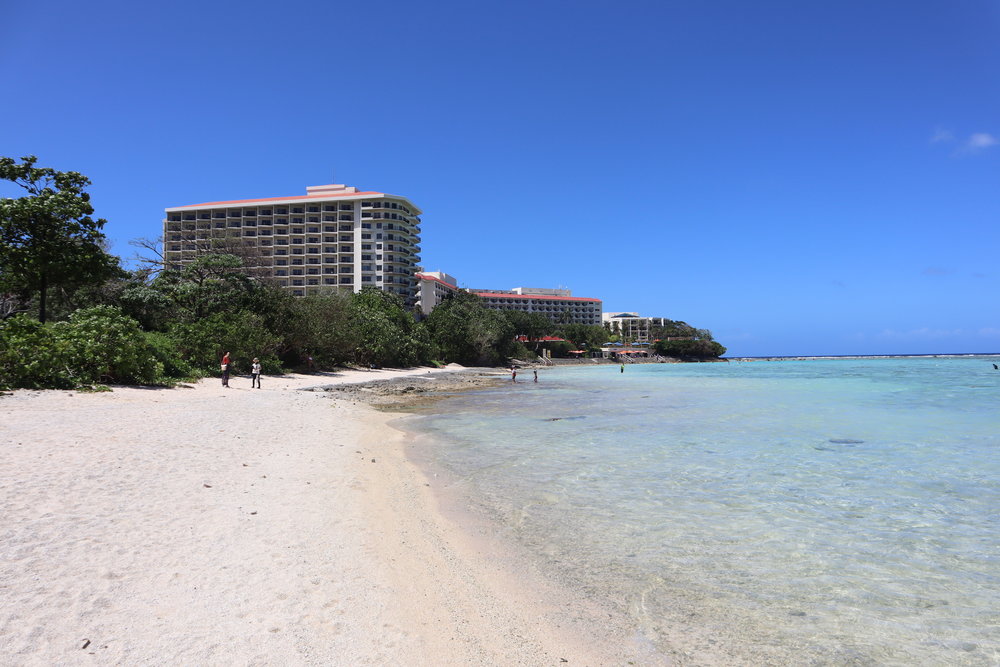
Tumon Beach
An internet connection allowed me to figure out a more efficient way to reach my next destination: Puntan Dos Amantes, or Two Lovers Point, a cliffside lookout a few miles north of Tumon, providing one of Guam’s most spectacular vistas of the island and the Pacific Ocean beyond.
I caught one of the Lam Lam Buses (of the excellently-named lamlamguam.com website) up there – bus tickets were US$7, and admission to Two Lovers Point was an additional US$3, and you could buy both from the bus driver.
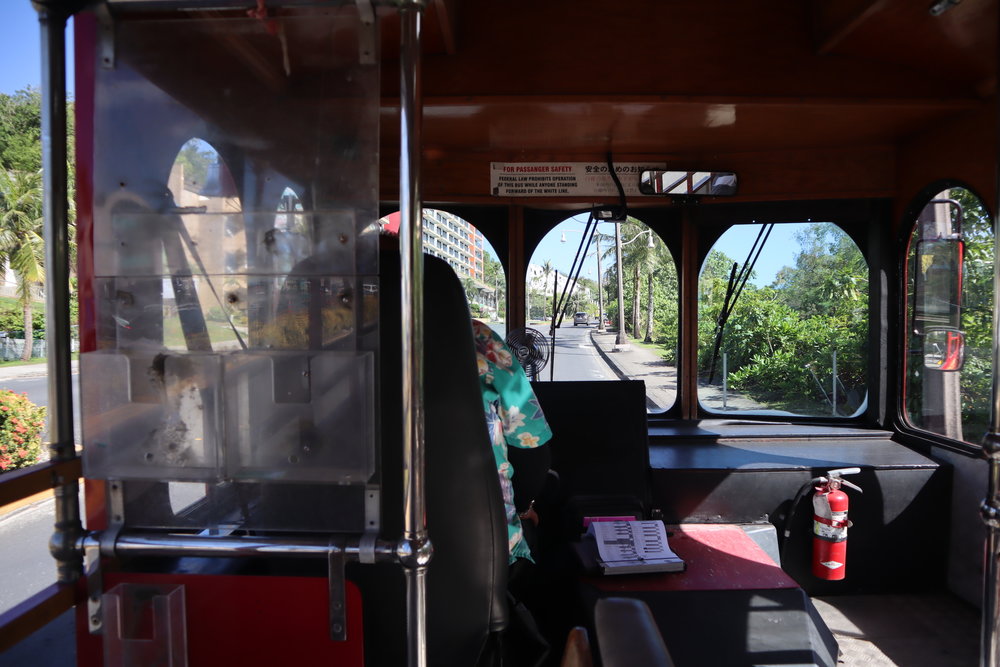
Taking the bus to Two Lovers Point
Along the way there, we passed by the Micronesia Mall, an even bigger shopping complex on the northeastern edge of Tumon. While the island is indeed highly Americanized, it’s also one of the most popular tourist destinations among South Korean and Japanese tourists thanks to its proximate location to the Asia-Pacific, so there are plenty of shops, restaurants, and services catering to East Asian tourists as well.
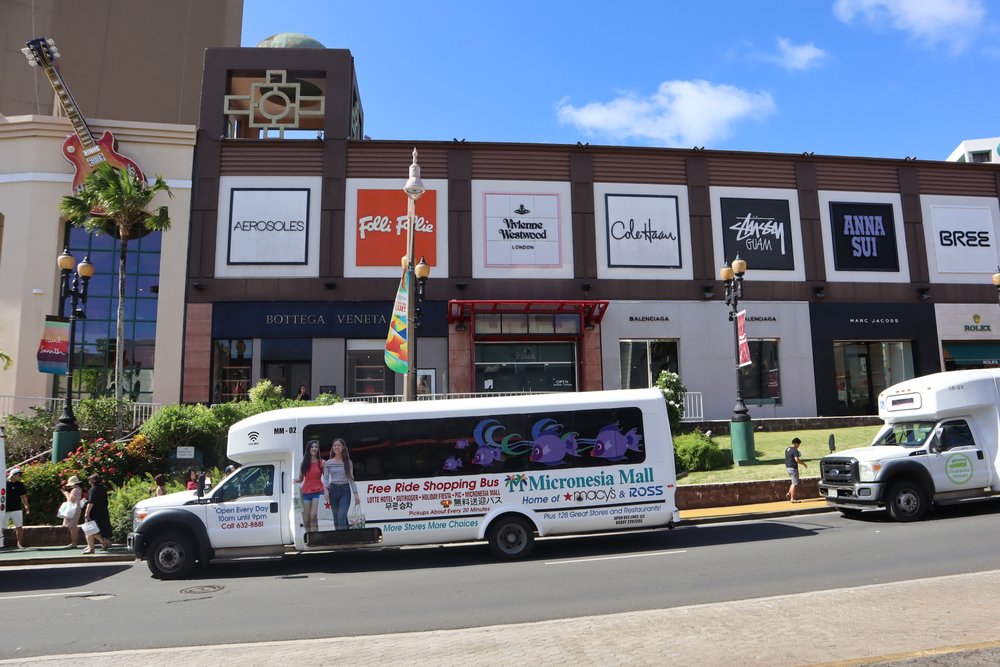
Micronesia Mall
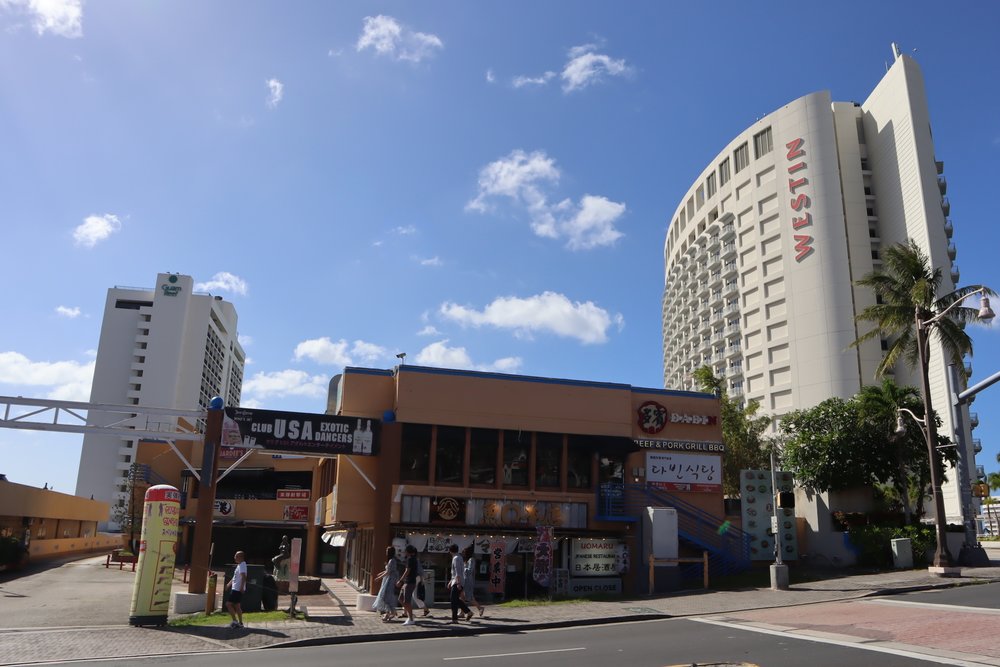
Maybe I’ll stay at the Westin next time?
Two Lovers Point was indeed quite a sight to behold, offering killer views of the island’s lush green landscape falling away into the vast Pacific Ocean.
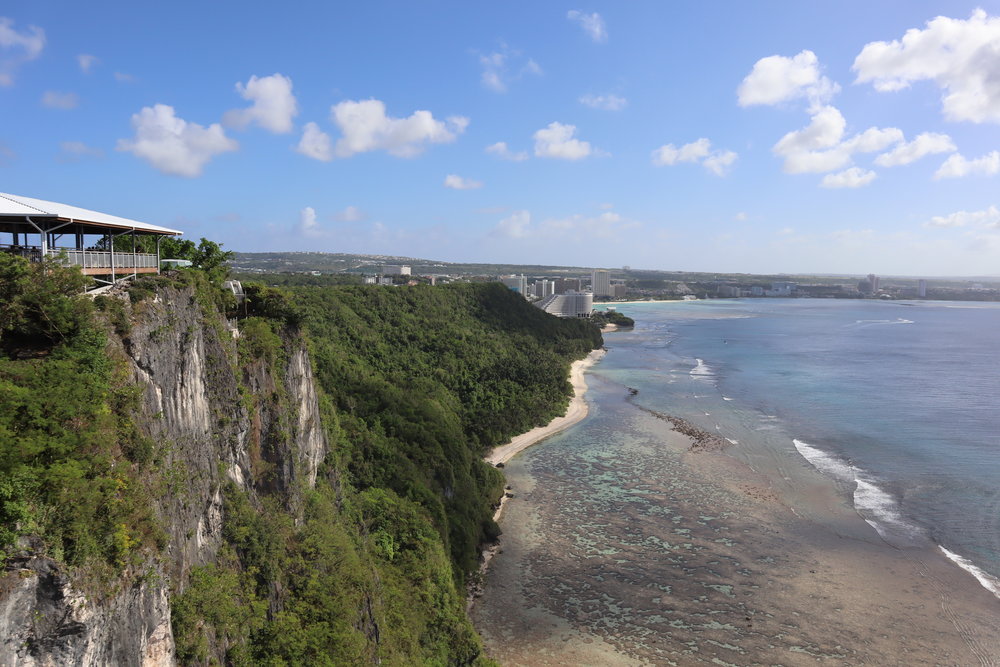
Views from Two Lovers Point
Chamorro legend has it that, during colonial times, a pair of star-crossed lovers – she hailed from a rich Spanish household, while he was a modest local boy – were chased up here by the girl’s indignant father, and decided to throw themselves off the cliff in their rapturous love.
Hence the name Two Lovers Point. Alas, too bad Jessy wasn’t here with me to reenact it.
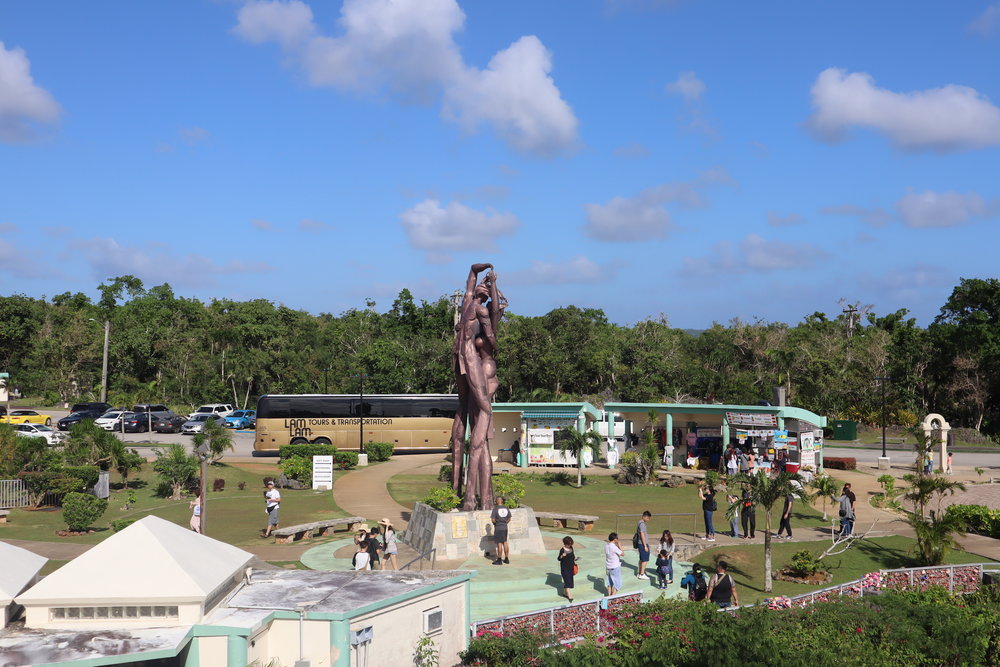
Two Lovers Point monument
The bus ticket I had purchased had covered round-trip travel, but I was already feeling quite exhausted by this point given my lack of sleep the previous night, so I decided to simply call a taxi to bring me straight to the airport so that I could relax in the United Club lounge for a few hours before my flight that evening.
I negotiated the ride down to US$20, and enjoyed a pleasant conversation with my cab driver about what it’s like to live on the island.
I learned that Guamanians are all given US citizenship at birth, and so many of them choose to pursue studies or work in Hawaii or the continental US at some point in their lives. However, a lot of Guamanians, such as my cab driver himself, do eventually choose to come back to the island, given the considerable cultural differences that exist between Guam and the mainland.
Arriving at the airport, I collected my boarding pass from the United check-in desk. I had managed to upgrade the Guam–Chuuk segment to business class as well, meaning that I’d have access to the United Club Guam, a much-needed place to relax and unwind after stepping off a redeye flight and then a full day in the sun.
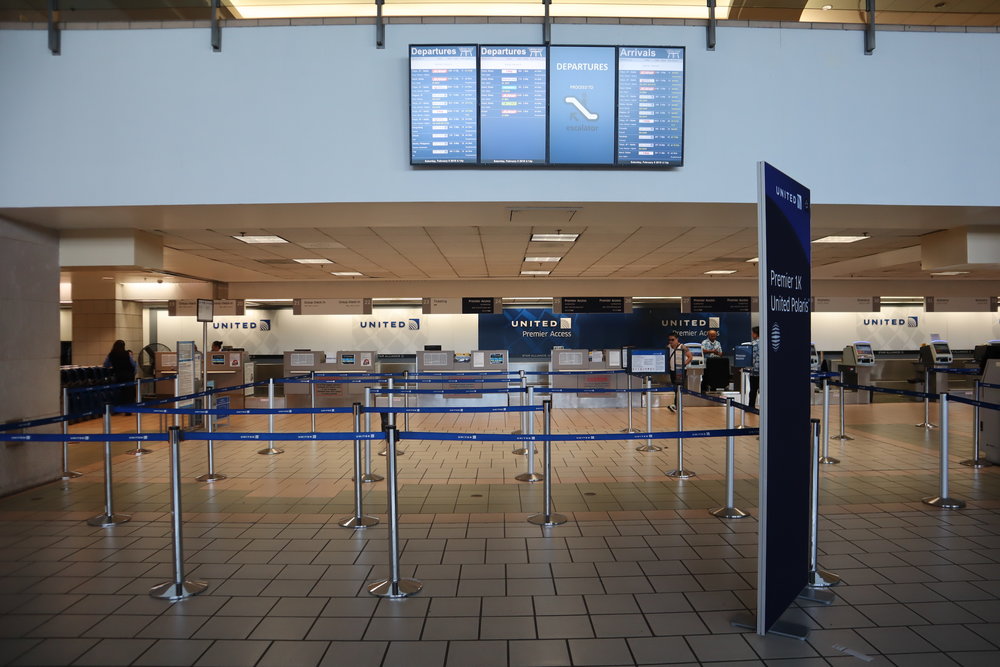
United check-in area, Antonio B. Won Pat International Airport
While the food and drink spread at the United Club was modest, there were at least a few hot dishes available, including a self-serve miso soup and ramen bar, where I helped myself to quite a few portions.
After getting some work done on my laptop and closing my eyes for a very brief nap, it was soon time to board the next flight of the journey, which would take me deeper into the Pacific Ocean to a place that few people around the world had ever heard of: Chuuk, one of the four constituent states of the Federated States of Micronesia.
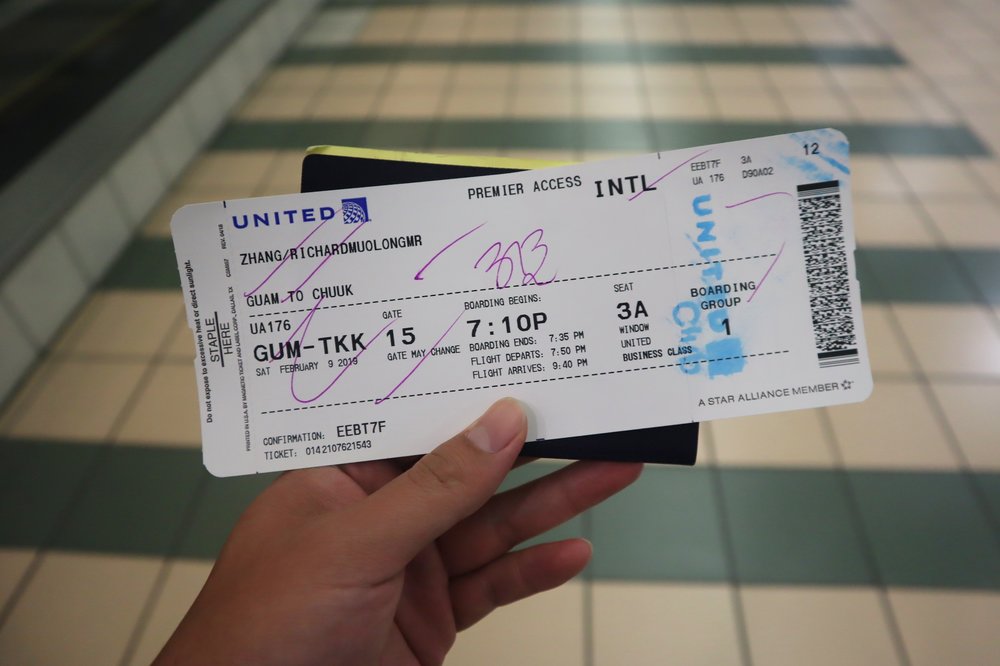
Boarding pass to Chuuk
Conclusion
In retrospect, my approach to exploring Guam was admittedly a little too casual, and I think I would’ve gotten more out of the island with some more careful advance planning and research. The four-way cultural mix at the heart of Guam’s identity was certainly eye-opening to see in action, but ultimately the island still feels very Americanized, which made it somewhat difficult to get too excited about it.
I can’t say I’m itching to come back to Guam, given how many other Pacific islands there are that I’d like to explore. But on the off-chance that I return, I’ll definitely be looking to venture beyond the Tumon district (most certainly with my driver’s license in hand) and visit some of Guam’s many other landmarks from various points in its chequered past.















Thank you for the post. I was looking into using the mini-RTW as an opportunity to do some interesting scuba diving, and although Pohnpei and Chuuk caught my eye, I initially discounted them as too hard to reach. Thanks to your legwork, I now have an itinerary with a few days in each of them, plus some Indonesia thrown in for good measure, not to mention a few layovers, also in places I haven’t visited before. Curious about your experience of the rest of the island hopper.
Awesome. Sometimes when I’m writing about these obscure places I’m like "no one’s going to read this!" I’m so glad you found these posts useful!
Thanks Ricky,
Guam has now been demoted from possibly interesting destination to avoid at all costs destination.
I wouldn’t make a special effort to visit unless you have a particular affinity for remote destinations (like me). Even then, there are arguably many more interesting islands in the Pacific that you could visit, like Chuuk & Pohnpei to come.